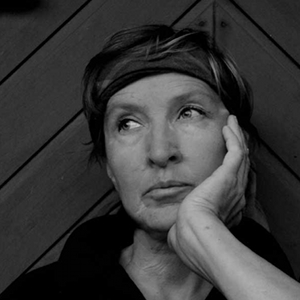
TIFF 2013 Interview: Pirjo Honkasalo on Concrete Night

Editor’s Notes: The following interview is part of our coverage of the 2013 Toronto International Film Festival. For more information on the festival visit http://tiff.net and follow TIFF on Twitter at @TIFF_NET.
I met the Finnish director Pirjo Honkasalo at Le Neuf Café in downtown Toronto. Honkasalo is an acclaimed cinematographer, editor, and a director. Her CV reads a long and historied journey through the world of film. As one in a handful of female Finnish directors, she’s a powerhouse and her voice speaks strongly in support of her craft.
As she greeted me with a big smile, we headed over to the patio to chat about her latest film, Concrete Night, the story of a young boy, far too much aware of the world, searching for his identity among the concrete jungle of the Helsinki projects.
—
Jacqueline: You handle some pretty tough subjects in documentary and in your feature film work. Concrete Night is a very viscerally aware book that challenges its characters. How do you go about tackling the themes and the characters within them?

Pirjo Honkasalo: I have a film based on a book of poetry. This was my first film based on a novel. Concrete Night by Pirrko Saisio. It started off like a film essay. It starts off really simple. As a director working with a book, you need the story as the skeleton, but it isn’t the main interest. The story brings the characters together though. I think the role of the filmmaker is to take the book and explore the topics deeper and not become a victim of the plot. The book offers me a possibility for a film, but I don’t need to adapt the book. That’s what interests me in working with Concrete Night.
Jacqueline: How did you go about casting such an quiet, but emotive character?
Pirjo Honkasalo: In casting this film I played twenty minutes of the Leningrad Symphony at the casting. I asked the boys to sit there and listen. I just watched their reactions.
I had a camera, but I didn’t look at it. This boy, Johannes Brotherus, was the only one to have the courage to go into himself while listening to the symphony, especially since he was in a strange situation. I wanted to portray the silence of men and he had it. It’s a secret to me, this silence. It’s a secret to the audience: the silence of the viewer reaches the silence of the characters on the screen. Johannes had the ability to make that connection.
There are a lot of documentary filmmakers that study their characters. I never ask my actors or subjects anything. I just watch them. If I have a non-verbal communication with the character, something between us, then I trust what I get from them is what I want. I think the thing that is interesting as a director is that it comes as a gift when the magic or the secrets are unraveled on the camera. I think that happened here.
Jacqueline: After watching Concrete Night, as I do with all the films, I went and did a bit of research. There are very few Finnish female directors.
Pirjo Honkasalo: In Finland we have a history with that. There have been five women who have directed and Finland is the first country in the world which gave the vote to women. In film, it’s very much culture. Out of these five women, one has directed one film, two have directed two films, and I’m the only one that has sort of continued.
Now Finnish cinematographers: I was twenty-two when I became the first female cinematographer on a feature film there. I thought ok, now I broke the ice. Now women can come.
But it took twenty three years for the next female cinematographer to come. Now I think of the new techniques that make it easier for women. But still there are very few. It was five years ago that the chairman of the Finnish Cinematographers Guild and called me to invite me to be a member. Five years ago they called me. They hadn’t had a women in there before!
Wow and you already had a long, historied career already!
Ha. I said to them, “Keep your club. I’m not interested in your boy club!”
The two other female directors of my generation, they both came from television, directed two films, and then they went back to television. It was too much.
I think it actually helped me a lot that I graduated as a cinematographer. Come to think of it, even with a handheld camera, we have our hips, the centre of gravity to hold them better. As mothers, some of us are used to carrying our children on our hips. So you can rest the camera there much better than men.
There has been an enormous fear of women from themselves; discriminating themselves out of these roles. You have to pass so many male roles. In particular, you have to gather the money for your project and there aren’t that many women in the big positions of business either. You also have to be a big leader to a crowd in a feature film as well. Traditionally these are all male roles, but we have to take them on and make them our roles.
I’ve been taking still photos, driving the directors, getting the directors coffee or whisky, and doing all the lower jobs since I was very young. I have a history, so it helps.
Jacqueline: What are your thoughts now then about the dominance of digital film to help out these young filmmakers, especially women?
Pirjo Honkasalo: The very positive thing about digital film is that for younger people, it makes it very easy for them to show their talent. Earlier, all you had was your hands. You had to make people trust you about making a great film. Now almost everybody has the possibility to do something and show something solid with a very low budget. Young people can do things now. Sometimes even dreamers can make films.
The heavy films and heavy financing is still there but I think it sometimes scares out the biggest talent. It favors the ones that are not so talented, but have that outgoing energy and aren’t afraid to promote themselves. Digital gives these other people that don’t have that energy the possibility to make something and exhibit their talent. I think this makes it easier for women too to start somewhere. But yes, it’s still hard for women. Female topics doing bring in the money which is a problem.
Jacqueline: How is the festival environment been treating you?
Pirjo Honkasalo: It’s been great so far, but I don’t think documentary and feature films shouldn’t be separated. It’s a stupid concept. They both study life and they both study human beings. Why do they have to have separate festivals?
I have done both feature films and feature documentaries. I am the same person and the same director. I don’t change heads. I don’t understand why I can’t have my films in the same festivals.
Jacqueline: You’re a very positive supporter, so imagine that you’ll never stop continuing the film process. What coming up next for you?
I don’t want to say, but I will say this: I want to do something with Libya. It will be the first time I’ll be working with animals.
Jacqueline: It’s been a pleasure talking about your projects and your opinions. They’re refreshing. I do hope to see you sometime soon at more festivals and premieres.
Pirjo Honkasalo: You go to documentary festivals?
Jacqueline: I do, in fact! We have HotDocs in Toronto and we have a theatre here especially for that called The Bloor Cinema. You should come sometime. We can have a drink while watching the movie there. Only place we can do that here.
Pirjo Honkasalo: Yes. Documentaries festivals are great. They have the content and less of the glamour. More relaxed, aren’t they?
—-
And with a warm handshake and a smile, I left Honkasalo to her next interview. The sun is shining bright in Toronto. In many ways, it shines for the hints of possibilities.
Related Posts
Jacqueline Valencia
Latest posts by Jacqueline Valencia (see all)
- Interview: Alan Zweig on When Jews Were Funny - November 11, 2013
- TIFF’s From Within - The Films of David Cronenberg: David Cronenberg introduces Naked Lunch - November 7, 2013
- TIFF’s From Within - The Films of David Cronenberg: Jeremy Irons and David Cronenberg on Dead Ringers - November 6, 2013






























